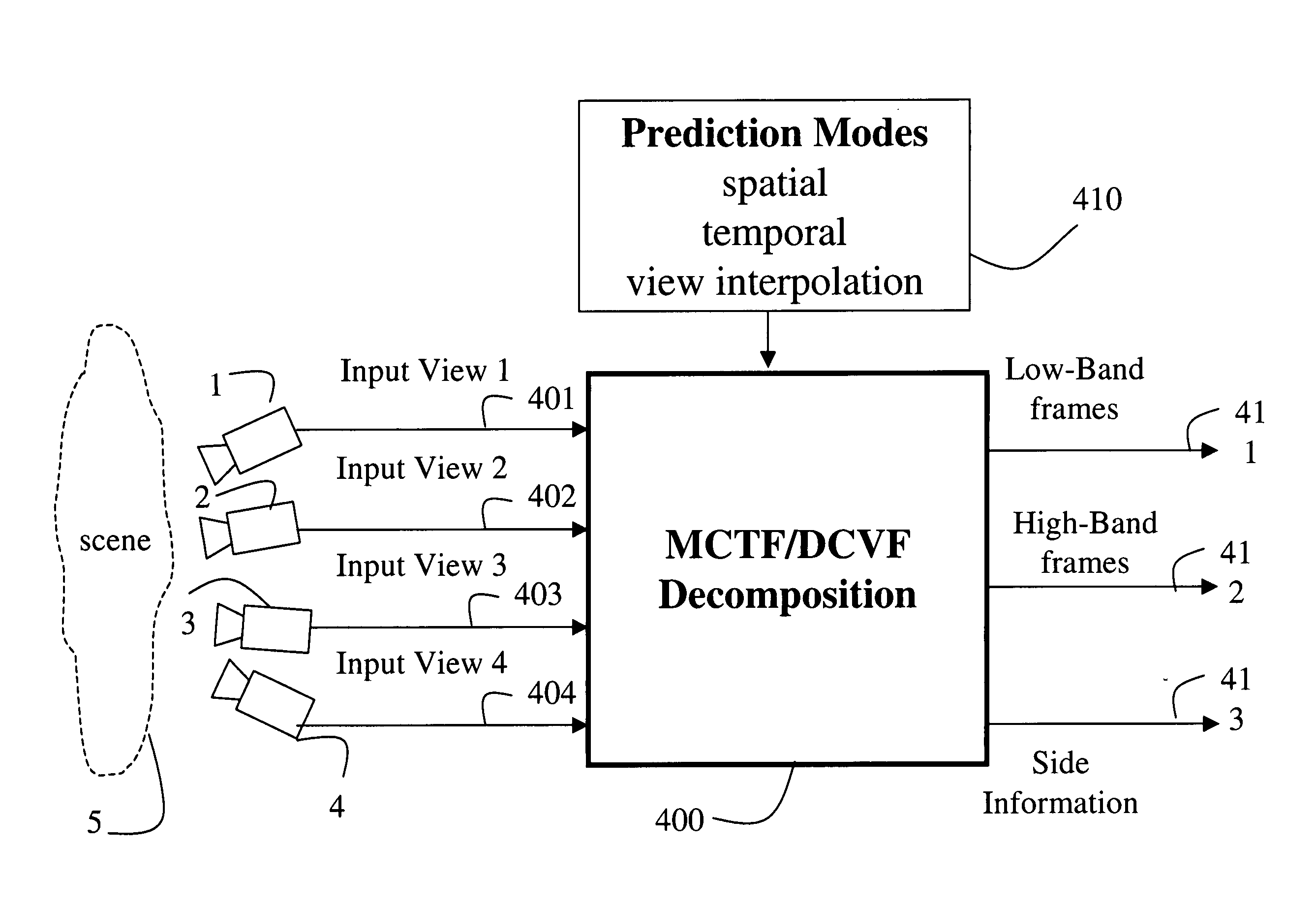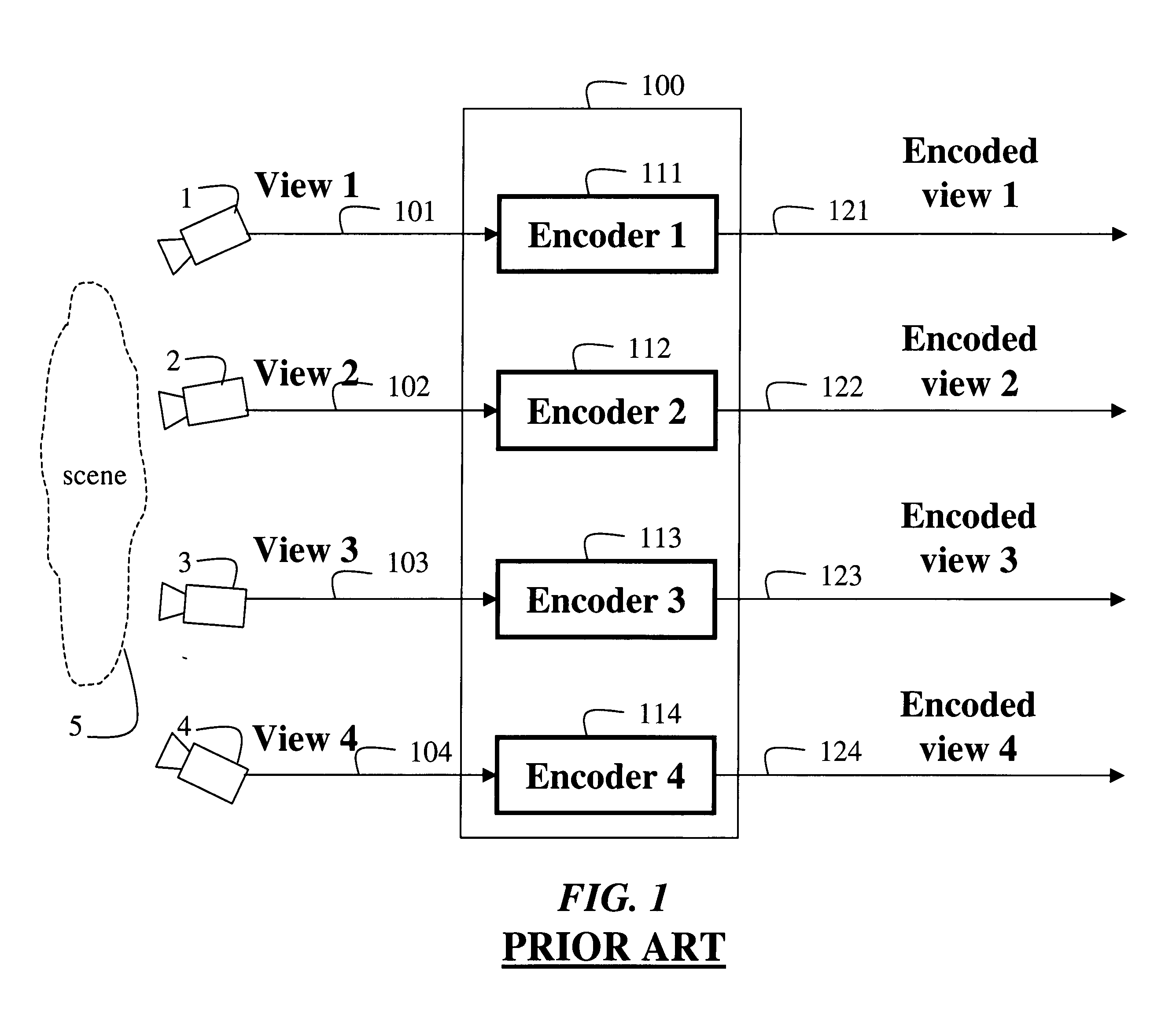Multiview video decomposition and encoding
a multi-view video and decomposition technology, applied in the field of video encoding, can solve the problems of not relating the different camera views, and the method cannot be applied directly to multi-view video encoding
- Summary
- Abstract
- Description
- Claims
- Application Information
AI Technical Summary
Benefits of technology
Problems solved by technology
Method used
Image
Examples
first embodiment
[0035] In a first embodiment, the MCTF and DCVF are applied adaptively on a block-basis to the frames of the input views to yield a decomposed set of low band frames, as well as high band frames, and the associated side information. In this way, each block selects adaptively a best multiview mode of prediction among the available multiview modes described above. An optimal method for selecting the multiview mode is described below.
second embodiment
[0036] In a second embodiment, the MCTF is first applied to the frames of each camera view independently. The resulting frames are then further decomposed with the DCVF. In addition to the final decomposed frames, the corresponding side information is also generated. If performed on a block-basis, the prediction mode selections for the MCTF and the DCVF are considered separately. As an advantage, this mode selection inherently supports temporal scalability. In this way, lower temporal rates of the videos are easily accessed in the compressed bitstream.
third embodiment
[0037] In a third embodiment, the DCVF is first applied to the frames of the input views. The resulting frames are then temporally decomposed with the MCTF. In addition to the final decomposed frames, side information is also generated. If performed on a block-basis, the prediction mode selections for the MCTF and DCVF are considered separately. As an advantage, this selection inherently supports view scalability. In this way, a reduced number of the views are easily accessed in the compressed bitstream.
[0038] The decomposition described above can be applied recursively on the resulting set of low band frames from a previous decomposition stage. As an advantage, our MCTF / DCVF decomposition 400 effectively removes both temporal and inter-view (spatial) correlations and can achieve a very high compression efficiency. The compression efficiency of our multiview video encoder outperforms conventional simulcast encoding, which encodes each view independently from other views.
[0039] Codi...
PUM
 Login to View More
Login to View More Abstract
Description
Claims
Application Information
 Login to View More
Login to View More - R&D
- Intellectual Property
- Life Sciences
- Materials
- Tech Scout
- Unparalleled Data Quality
- Higher Quality Content
- 60% Fewer Hallucinations
Browse by: Latest US Patents, China's latest patents, Technical Efficacy Thesaurus, Application Domain, Technology Topic, Popular Technical Reports.
© 2025 PatSnap. All rights reserved.Legal|Privacy policy|Modern Slavery Act Transparency Statement|Sitemap|About US| Contact US: help@patsnap.com



